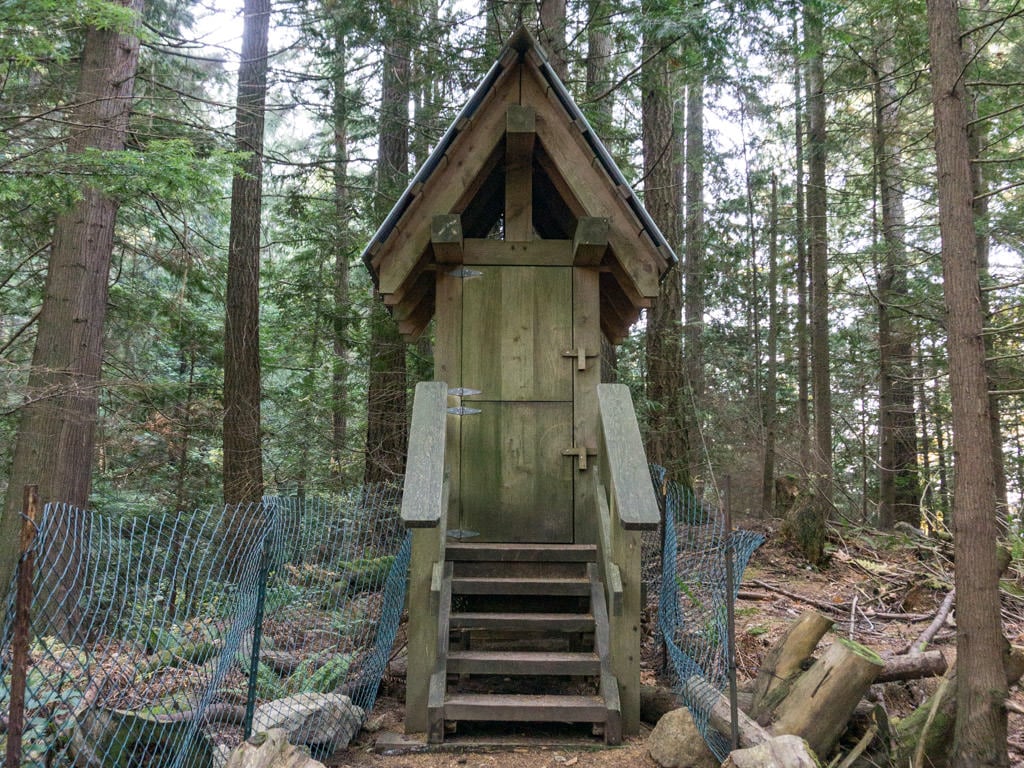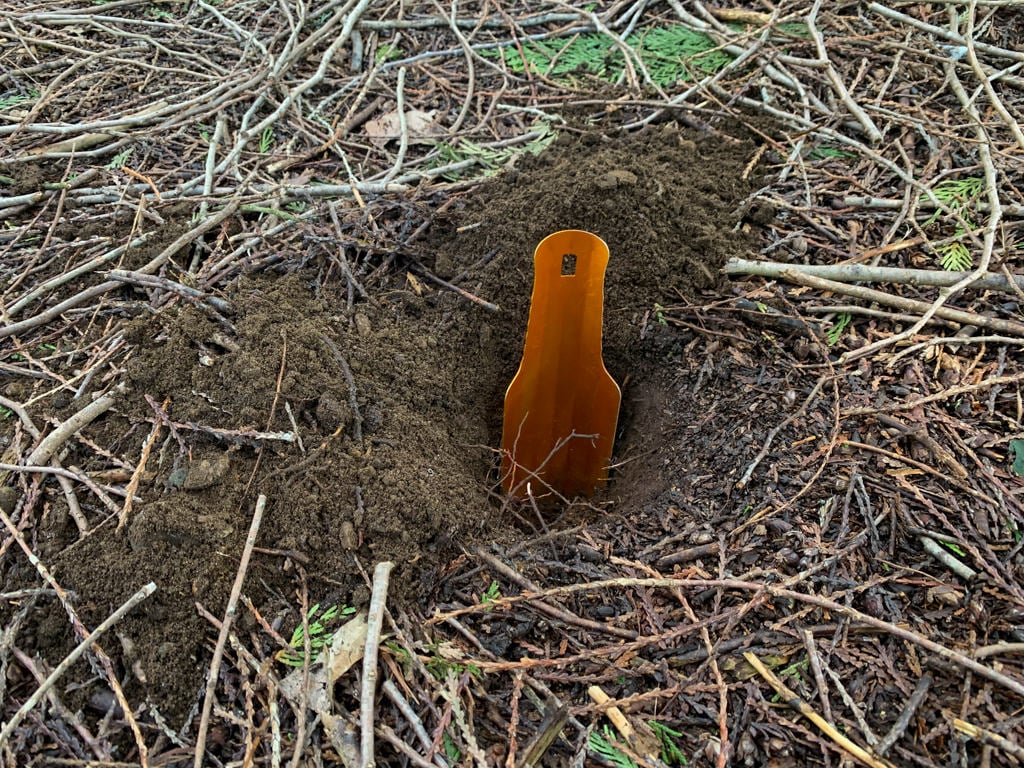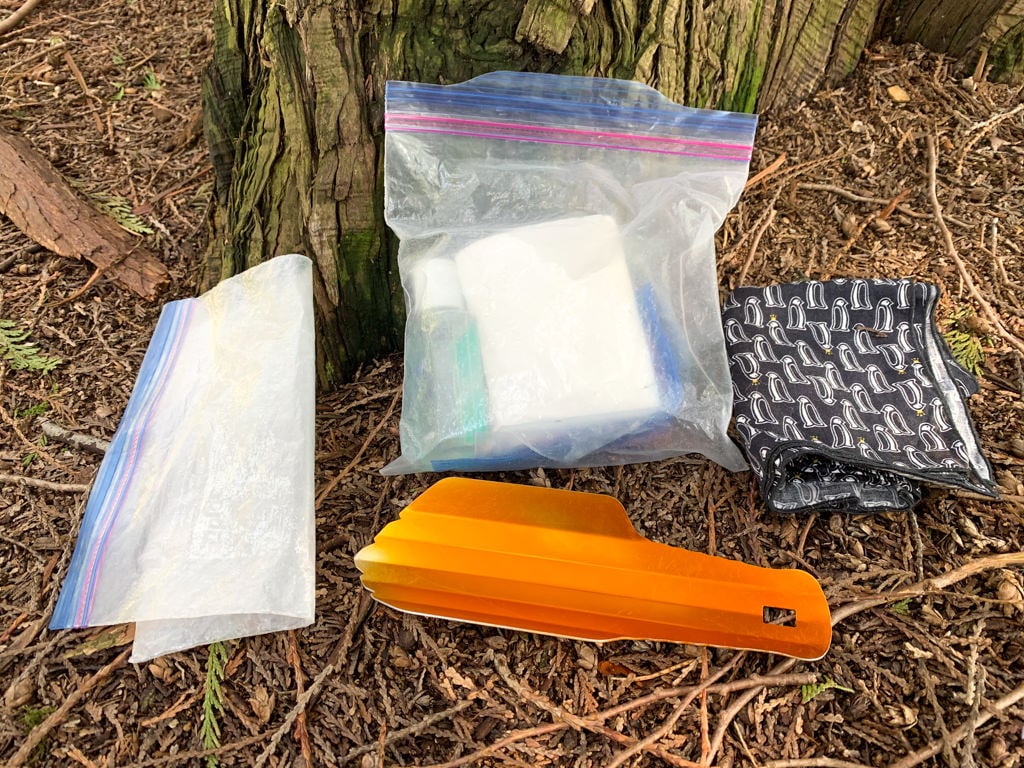How to Go to the Bathroom on a Hike: A Leave No Trace Guide
While it might not be a topic you are used to discussing, it’s important to learn how to go to the bathroom while hiking. I’m sure you’ve seen used toilet paper or even poop on the trails. So gross! But more importantly, it pollutes water and can make animals sick.
I’m a Leave No Trace Master Educator and believe it or not, I volunteer to teach people how to go to the bathroom in the woods while reducing their impact on the environment. In this post, I’ll teach you the basics of peeing and pooping while hiking.
Why it’s Important to Go to the Bathroom the Leave No Trace Way
Let’s start with why this is important. Human waste contains all kinds of pathogens that aren’t normally found in nature. If those pathogens get into a water source, they can make people and animals sick. Burying poop gives it time to decompose and the soil filters out the pathogens.
Burying poop also hides it from view, which is great since poop looks gross. But what is even grosser is that many animals like to eat human poop or roll in it. This can attract wildlife to your camp. It also can make animals sick. And no dog owner wants their dog to eat or roll in poop!
Use a Toilet When Possible

The best way to go to the bathroom in the woods is to use a toilet or outhouse. Do some research ahead of time to find out if there are toilets at the trailhead or anywhere on the trail you are going to hike. While some outhouses can be a bit smelly, it’s better to plug your nose and use the toilet than distribute human waste in the nearby forest.
How to Pee While Hiking
Peeing on the trail is pretty straightforward: head away from water sources, the trail and campsites and find a private spot to go. Urine doesn’t have much effect on animals, plants or soil the way poop does. If possible, try to pee on rocks or gravel rather than plants. Some wildlife, like goats and deer, may be attracted to the salt in pee and will defoliate plants and dig up soil to get to it.
If you use toilet paper to wipe after peeing, pack it out with you in a plastic bag. Toilet paper takes weeks or months to break down and in the meantime, it looks disgusting. Like some female hikers, I swear by a pee cloth. Basically, it’s just a bandana or other cloth you can use as reusable TP, then wash out at home.
How to Poop While Hiking
If you have to poop and can’t make it an outhouse, head 200 feet (70 big steps) away from trails, campsites and water sources. Use a trowel, stick, tent peg, or rock to dig a hole 6” (15cm) deep. Poop in the cat hole, then cover it up with dirt.

Don’t wait until it’s an emergency to find a place to go. It’s stressful and you’ll likely end up not being able to get far enough off-trail or away from water. If you do find yourself tight for time, find a good spot, poop, then dig a cat hole next to your poop and use sticks to move it into the hole.
Pack out your toilet paper in a plastic bag. You can wrap your used TP in clean TP for modesty. Some people like to bring a bag covered in duct tape to pack out their toilet paper so you can’t see inside. Even when buried, toilet paper takes a few weeks or months to break down. In the meantime, dogs and wildlife like to dig it up. Gross! And please don’t burn your TP – many hikers have accidentally started forest fires that way.
If you don’t have any toilet paper, you can use natural TP like moss, leaves, rocks, or snow. Bury your natural toilet paper in your cat hole.
After you poop, use hand sanitizer to clean your hands well. When hikers get sick, they often think the root of their problem is unclean water. Unfortunately, it’s usually just poor hygiene.
While it isn’t common near Vancouver, in some environmentally sensitive areas like deserts, river canyons, and high mountains, it is best to pack your poop out with you. It’s even required in sensitive high use areas like the mountaineering routes up Washington’s Mount Baker. You can buy commercially available poop bags that even come with material that turns liquid into a gel and neutralizes odors.
Bring a Backcountry Bathroom Kit
I keep a plastic bag with my backcountry bathroom kit in my backpack at all times. That way I’m always prepared to go to the bathroom the Leave No Trace way.
Here’s what’s in my kit:
- Lightweight hiking trowel
- Toilet paper
- Hand sanitizer
- Extra Ziploc bag to pack out toilet paper
- Reusable pee cloth

Pack Out Your Dog’s Poop
Just like human poop, dog poop contains all kinds of bacteria that aren’t normally found in nature. Your dog’s poop can make wild animals sick. And it can also attract other dogs who might eat it or roll in it. Gross! Bring poo bags and pack out your dog’s feces. If the smell bothers you, bring a sealed container to put the poo bags in.
Learn More About Leave No Trace
Want more info about how to Leave No Trace on your next hike? Read our Guide to Leave No Trace or visit LeaveNoTrace.ca.
Taryn Eyton is a Squamish-based outdoor and adventure travel writer and Leave No Trace Master Educator. She is the founder of the hiking website HappiestOutdoors.ca and the author of Backpacking in Southwestern British Columbia: The Essential Guide to Overnight Hiking Trails (Greystone Books, 2021).
One response to “How to Go to the Bathroom on a Hike: A Leave No Trace Guide”
Leave a Reply
Comments that gratuitously attack or demean individuals or organizations are not acceptable. We reserve the right to remove comments or any other content we deem unacceptable in our sole discretion, including removing user names and profile pictures. For our full website terms and conditions including our legal guidelines for user postings and comments on www.vancouvertrails.com, please see our Terms of Use and Privacy Policy.

Absolutely great tips!!! Thank you so much for your care and attention to our beautiful land and animals. I appreciate you teaching us how be better advocates for the earth and all of us while we live & enjoy it.